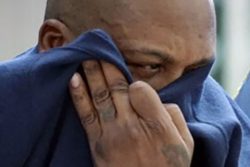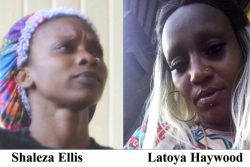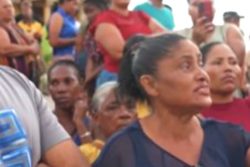When public officers who knowingly place themselves in harm’s way in pursuit of enforcement of the law are harmed or come under attack from those whose criminal pursuits they seek to deter, not only do law-abiding citizens have a duty to roundly condemn such acts and to insist that the perpetrators are determinedly ferreted out and suitably punished, but the state itself has an obligation to place every available resource at the disposal of the effort to hunt down and apprehend the guilty parties.
Incidents like last Thursday’s shooting of two Guyana Revenue Authority enforcement officers at Bee Hive on Thursday (thankfully, it does not appear that either of the two men was seriously injured) whilst they were in the process of probing what appeared to be a case of smuggling sent – not for the first time – an unmistakable message to the society as a whole and to law-enforcement in particular, regarding both the nature and the magnitude of the crime challenge that confronts the state in its law enforcement pursuits.
One of the challenges associated with tackling particular types of crimes, not least major drug-trafficking and the smuggling of various types of goods is that such criminal enterprises are commonly attended by elaborate operational regimes which, frequently, include a dimension of force, sometimes deadly force, as a means of protecting their operations against the deterrent of legal sanction. What derives from this is the necessity for a law-enforcement posture that not only requires discretion and patience but also – when push comes to shove, as it so often does – a recognition of the harsh reality of having to place lives on the line and a preparedness to do so. In such confrontations, it becomes a question as to which side possesses a monopoly of force. It is a trial of strength which law-enforcement loses not only at its own peril but at the peril of society as a whole.
This, as was demonstrated so clinically on Thursday evening at Bee Hive is where, as far as fighting crime is concerned, the rubber hits the road, so to speak. It is functionaries like the two GRA officers who braved gunfire in the execution of their duties on Thursday that symbolize the preparedness of law enforcement to hold the line and sometimes to do so at a cost.
One must begin by assuming that the shooters who targeted the two GRA officers meant them the worst harm possible. That is a reflection not just of their determination to conceal whatever illegality the two officers were investigating but, as well, a preparedness to engage law enforcement in a trial of strength, a test to determine which side possesses a monopoly of both will and force. This is the sort of fight which law enforcement can never afford to lose.
The Bee Hive incident is one of those occurrences (and there have been others) that signals the arrival of lawlessness at a juncture which demands that as a mostly law-abiding society we draw a line in the sand. What the shooters have done is to set the Police Force and the human and material resources at its disposal a challenge into which they must throw themselves with a sense of mission. As has already been mentioned, when attempts are made to do harm to those who protect and serve in the execution of their duties those responsible must be sent the strongest possible message to the effect that it is not just the targeted officials but the entire nation that they seek to injure. We neglect to do so at our own collective peril.
There is, as well, the much more extensive psychological damage often inflicted on an entire community. Some of that appears to have occurred at Bee Hive on Thursday evening. There may well be other communities too that consider themselves hostages to fear and intimidation that derives from having to live cheek by jowl with criminality that is buttressed by the implicit threat of the use of force against those who refuse to look the other way in the face of what, in many instances are simply unbearable acts of criminality and lawlessness.
The danger here is that the ‘victims’ of this kind of intimidation have, in many instances, simply adopted a posture driven by the ‘wisdom’ that discretion is the better part of valour, so that out of a sense of concern for their own self-preservation they unwillingly – not unwittingly but unwillingly – become part of the problem. When that happens, the real criminals are protected by the silence of the community in which they operate.
This is where the law enforcement institutions – both the police and the courts – need to be impelled in their responses (to occurrences such as the Bee Hive incident) by a clear understanding of the magnitude of the crime and the sort of multi-level consequences that it inflicts on the society as a whole. It is as much a question of reassuring law-abiding communities of the preparedness of law-enforcement to protect and empower them as it is a matter of sending an unmistakable message to public officers who must do the jobs like GRA enforcement officers do that we are mindful of the risks they run to enforce the authority of the state.









